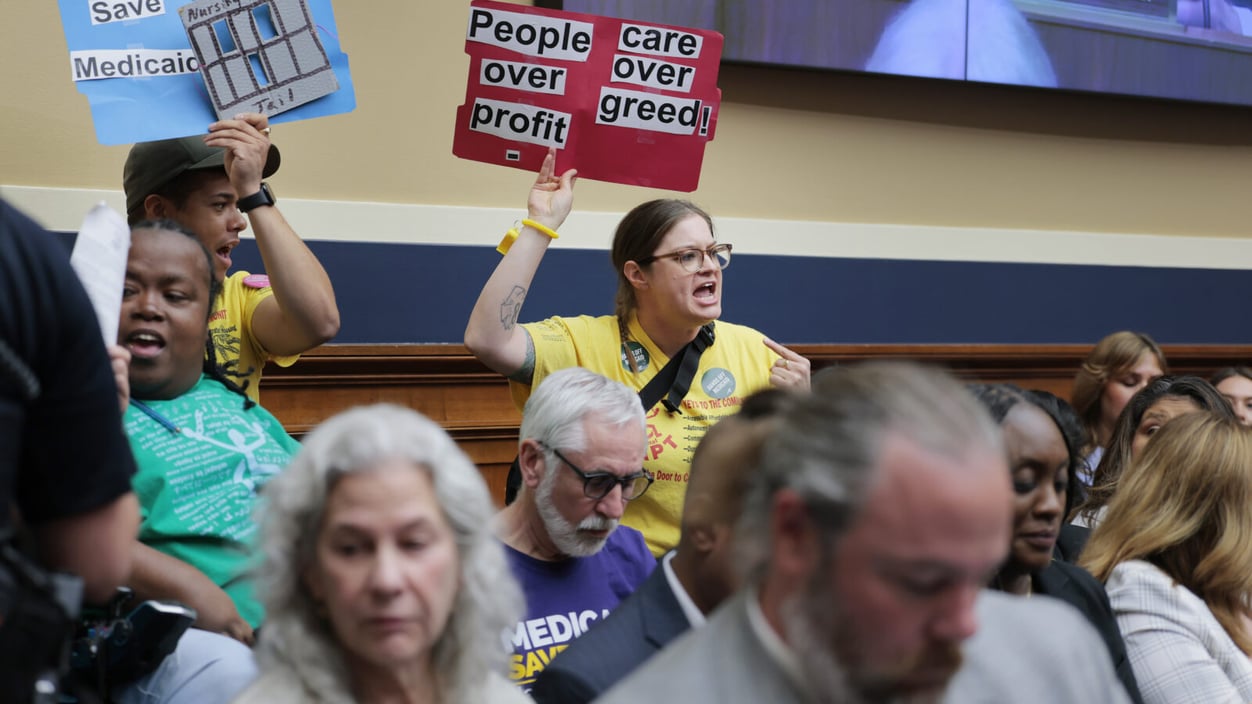disability
A disabled activist speaks on the tax bill’s real life toll

Anna Moneymaker/Getty Images
As a disability rights activist, Latoya Maddox (in green above) is no stranger to protesting — or to putting her body on the line and getting roughed up by security while doing so. In 2017, when Republicans in Congress sought to cut Medicaid and other health care services, she laid down outside Sen. Lindsey Graham’s office, protesting a plan that would imperil her life. This spring, she was escorted by Capitol police out of a House committee meeting after demonstrating against the latest proposed cuts to the federal program.
“I'm out here putting my life on the line,” Maddox said to STAT’s O. Rose Broderick in an interview. Maddox, 42, has arthrogryposis multiplex congenita along with other disabilities, for which she needs 24-hour care from aids. She’s also a single parent to a teenager with his own medical needs. “But people are looking at it and are like, oh these disabled people are just out here trying to get attention and get paid to do this. No, we ain't getting paid to do it.”
Read the conversation Maddox had with Rose to get an intimate understanding of what’s at stake for people with disabilities when it comes to the largest potential cuts to federal health care spending in history.
mental health
Esketamine alone proves effective for depression, per study
Six years ago, the FDA approved esketamine — a derivative of ketamine, sold as Spravato by Johnson & Johnson — in combination with oral antidepressants as the first new treatments in decades for treatment-resistant depression. Research has continued to demonstrate the potential of the drug, which is administered as a nasal spray. Based on data from J&J, the FDA approval for esketamine was expanded in January, so that it can be offered as a standalone therapy. Yesterday, JAMA Psychiatry published the full results of the company’s trial.
Over more than three years, J&J researchers performed a randomized clinical trial with almost 380 participants. At the beginning, 79% of participants were rated “markedly ill” or worse. After a month of twice-weekly intranasal treatments, this decreased to 27% of the lower dose group and under 23% in the higher dose group, as opposed to 52% of the placebo. Nausea, dissociation, and headache were the most common side effects, but the study noted that most occurred on a dosing day and resolved within a couple hours of taking the medication during clinical observation.
Looking forward: Right as Spravato received its expanded approval, researchers at Yale announced an upcoming trial that will compare the effects of esketamine and intravenous ketamine, which has yet to come fully into the mainstream. Though as STAT has reported, ketamine can be life-changing for people with suicidal thoughts when they can access it.
